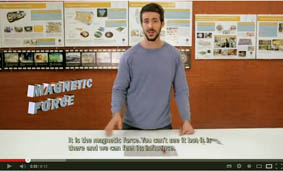
The Science Park has introduced the microdocumentary 'Hágase la masa', a work of scientific dissemination about the Higgs Boson, developed by Javier Díez under the scientific direction of Astronomy professor and director of the Astronomical Observatory of the University of Valencia, Vicent J. Martínez. The 6-minute long video, subtitled in English, has been assessed by scientists from the IFIC and the University of Valencia and has been created for the dissemination portal www.conec.es
Science makes giant steps when theoretical predictions are confirmed by experiments or observations. Almost fifty years ago, different physicists, among whom was the British Peter Higgs, postulated the existence of a field, called the Higgs field, which would provide space and effectively permeate mass to the elementary particles that have it, distinguishing them from the ones that do not have it and travel at the speed of light, such as the photon.
The largest particle physics laboratory in the world, CERN, announced in July 2012 that two international collaborations of thousands of physicists (among whom are many Spanish) had discovered a boson, the particle that could be mediating the Higgs field . It is a discovery of great importance to physics. Without the Higgs boson no particle would have any mass, there would be no atoms, no molecules, no planets, no stars, and obviously no living beings.
The video explains in a simple way the significance of this discovery. The four fundamental forces of nature are introduced and the concept of field in physics is explained to understand the interactions that produce these forces and the importance of the mediating particles of the different interactions.
In addition, the video reviews the ideas and contributions of many scientists that have led to this discovery and it explains what the role of the Higgs field is in nature. Finally, it illustrates the process that the Great Hadron Collider (LHC) has used to discover what is probably the most wanted particle in history, the famous Higgs boson.
The work has been presented at the Institute of Corpuscular Physics of the University of Valencia (IFIC), joint center of this institution and the CSIC, which participates in the ATLAS project, one of the two experiments Great Particle Collider, located in the Swiss laboratory.
Link to the video:
http://www.conec.es/2013/02/hágase-la-masa/
Last update: 6 de february de 2013 10:53.
News release



















